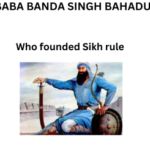Tricolour can now stay hoisted day & night: Basics Explained

The national flag can now remain hoisted through the night if it is in the open and hoisted by a member of the public. the Ministry of Home Affairs amended the Flag Code of India 2002 to allow for the national flag to be flown even at night. Earlier, the flag could be hoisted only between sunrise and sunset.
The Azadi Ka Amrit Mahotsav is being celebrated to commemorate 75 years of independent India. The Har Ghar Tiranga campaign encourages the citizens to hoist the national flag in their homes from August 13 to 15.
Indian national flag or Tricolour can now be made of polyester and with the help of machines, according to the revised Flag Code of India. Before this, only hand-woven and hand-spun flags made of cotton, silk, wool, or Khadi were allowed.
The Patriot Pingali Venkayya, popularly known as ‘Jhanda Venkaiah’, the man who designed the tricolor flag of India , was born on August 2 in 1876 at Bhatlapenumarru near Andhra Pradesh (earlier known as Machilipatnam)
It was in the year 1921 that Venkayya first conceived the idea of coming up with a national flag. In 1931, the flag was officially adopted by the Indian National Congress.
LEARNING FROM HOME/WITHOUT CLASSES/BASICS
The National Flag of India has a horizontal rectangular shape, tricolor (deep saffron, white and green), and an Ashoka Chakra with 24 spokes in navy blue color at its center. The National Flag of India was adopted in its present form during the meeting of the Constituent Assembly held on 22 July 1947.
The National flag of India is a horizontal tricolor of deep saffron (Kesari) at the top, white in the middle, and dark green at the bottom in equal proportion. The ratio of the width of the flag to its length is two to three.
In the center of the white band is a navy-blue wheel that represents the chakra. Its design is that of the wheel which appears on the abacus of the Sarnath Lion Capital of Ashoka. Its diameter approximates the width of the white band and it has 24 spokes.
In the national flag of India, the top band is of Saffron color, indicating the strength and courage of the country. The white middle band indicates peace and truth with Dharma Chakra. The last band is green in color showing the fertility, growth, and auspiciousness of the land.
The Dharma Chakra depicted the “wheel of the law” in the Sarnath Lion Capital made by the 3rd-century BC Mauryan Emperor Ashoka. The chakra intends to show that there is life in movement and death in stagnation.
On 26th January 2002, the Indian flag code was modified and after several years of independence, the citizens of India were finally allowed to hoist the Indian flag over their homes, offices, and factories on any day and not just on National days as was the case earlier.
The National Flag shall be rectangular in shape. The ratio of the length to the height (width) of the Flag shall be 3:2.
There shall be no restriction on the display of the National Flag by members of the general public, private organizations, educational institutions, etc., except to the extent provided in the Emblems and Names (Prevention of Improper Use) Act, 1950 and The Emblems and Names (Prevention of Improper Use) Act, 1950.
The Flag shall not be flown at half-mast except on occasions on which the Flag is flown at half-mast on public buildings in accordance with the instructions issued by the government;
It further states that whenever the flag is displayed, it should be distinctly placed and should “occupy the position of honor”. Among the things which are not allowed are putting up a damaged or disheveled flag, flying the tricolor from a single masthead simultaneously with other flags, and no other object, including flowers or garlands, or flag should be placed on the same height beside the tricolor or above it.
The flag should not be used as a festoon, or for any kind of decoration purposes. Any tricolor which is damaged should be destroyed in private, “preferably by burning or by any other method consistent with the dignity of the Flag”.
Also, any paper flags, which are used on occasions of national and cultural occasions or sporting events, should not be casually discarded and must be disposed of in private.
For official display, only flags that conform to the specifications as laid down by the Bureau of Indian Standards and bearing their mark can be used.
In the event of the death of heads of state, dignitaries, or during state funerals, the tricolor can be flown at half-mast during the period of mourning. However, if the period of mourning coincides with events of national importance, such as Independence Day, Republic Day, etc., the tricolor should not be flown at half-mast anywhere except over the building in which the body of the deceased is lying.




0 Comments